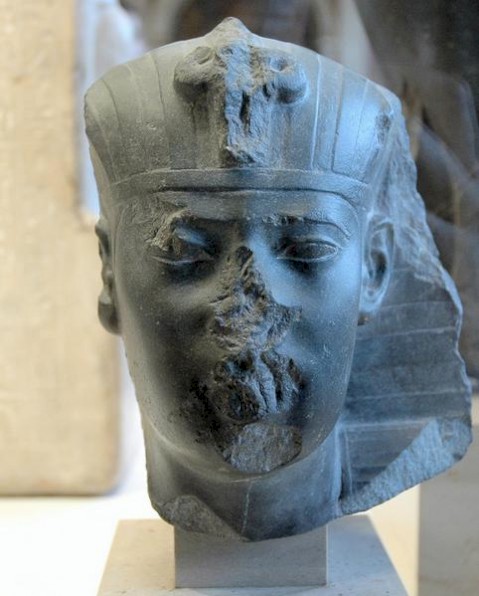This page is a stub. It will be expanded to a full-fledged article.
Apries

Egyptian names: Ha'a'ibra Wahibra
Successor of: Psammetichus II
Relatives
- father: Psammetichus II
- wife: Takheredeneset
- daughter: Khetbeneit-erboni II (?)
Main deeds
- 589: Succeeds his father, who had refused to intervene in the Babylonian Empire
- Apries starts to support the Phoenician cities and Judah against Babylonia; Sidon is captured
- 587: King Nebuchadnezzar of Babylonia captures Jerusalem; an Egyptian army is defeatednote and king Zedekiah is taken to Mesopotamia; the prophet Jeremiah escapes to Egypt; many Judaeans become mercenaries in the Egyptian army (in Daphnae and Elephantine)
- 586?: Ankhnes-Neferibre, a sister of Apries, is made "god's wife of Amun" in Thebes
- 570: The Libyan tribal lkeader Adikran requests support against the Greeks from Cyrene; this creates tensions in Egypt between Libyan and Greek settlers
- The Egyptian expeditionary force is defeated at Thestis; the army makes its general Amasis king, who is accepted as co-ruler
- 568/567: Unsuccessful Babylonian invasion, led by Nebuchadnezzar II
- 567: Civil war; Apries is killed by soldiers of Amasis in the battle of Mompemhis
Buildings
- Herodotus (2.163) mentions the "great and splendid palace of Apries" in Sais
- Temple of Thoth at Hermopolis Parva
- Building works in the Ptah temple at Memphis
- The fort of Memphis converted into a palace
- Temple built by Siamun at Tanis is replaced
- A sanctuary, dedicated to Osiris (but in fact the tomb of king Djer of the First Dynasty), repaired at Abydos
- New Banebdjed temple at Mendes (built 570-567)
Succeeded by: Amasis